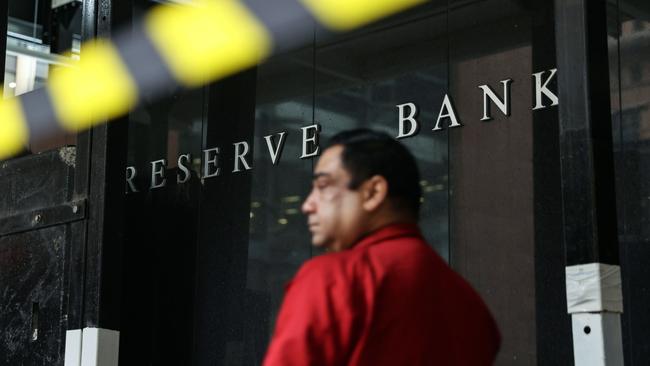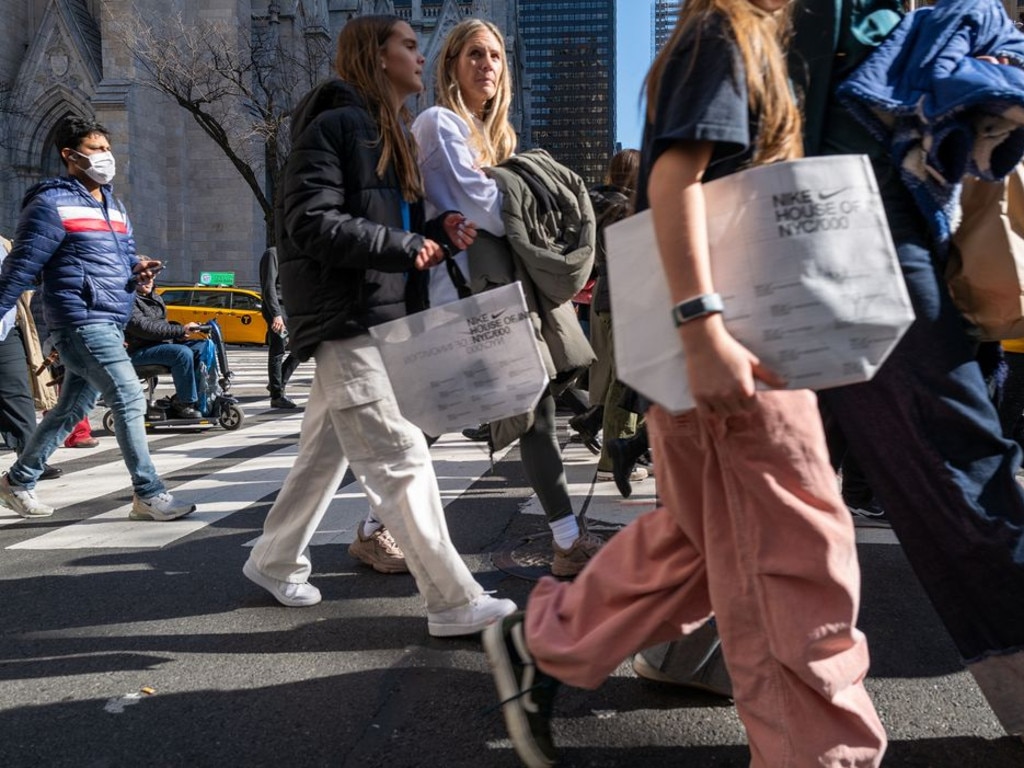Tipping point as consumers hit the brakes on spending as rates take effect
The impact of soaring inflation combined with interest rate hikes may be at the point where it provokes a sudden stop in spending and raises the risk of recession.

Consumer spending may have reached a tipping point where the cumulative impact of soaring inflation and interest rates causes a sudden stop in spending, raising the risk of recession.
A string of profit warnings from consumer companies suggests a downturn in spending is set to accelerate, yet economists believe interest rates will need to go even higher to ensure that inflationary expectations remain under control after 18 months of soaring prices.
Higher-than-expected inflation data, award wage rises and hawkish rhetoric from the Reserve Bank have led to predictions of a further rise in the cash rate from 4.1 to 4.6 per cent by September, even as the estimated chance of a recession in coming quarters jumps to 50 per cent.
Consumption had until recently been remarkably resilient, underpinned by a “catch-up” of spending due to the late reopening of the economy, combined with a very strong labour market, which led households to run down their savings ratio very sharply to 3.7 per cent, the lowest since the Global Financial Crisis of 2008. However, there are now signs of cracks emerging, according to UBS.
Retail sales and consumption volumes were near flat for several quarters, but the upturn in interest rate expectations this month has “materially increased the risks” for consumer spending.
“Our economic growth outlook has long been for a sharp slowdown by the December quarter amid even weaker consumption,” UBS Australia chief economist George Tharenou said.
“But given companies’ updates imply a sudden stop of spending in the last month, the economy is at a tipping point.
“If the RBA keeps hiking, there is downside risk to our outlook, which would raise the risk of recession to about 50 per cent.”
Despite the RBA lifting rates sharply in the past year, the housing market has shown relatively little stress as mortgage arrears stayed very low, and remarkably, house prices lifted in recent months. But some new data on mortgages suggest a recent spike, according to UBS.

Prime residential mortgage- backed securities more than 30 days in arrears rose to about 1.75 per cent in March, well above what would be expected based on seasonal effects.
Arrears are likely to lift further because the RBA has hiked twice more since then.
“The longstanding challenges for the Australian consumer, notably the higher cost of living, have now materialised, with spending slowing and the prospect of a significant slowdown in the 2024 financial year across many retail categories,” Mr Tharenou said.
Macquarie also warned of a tipping point, “excess savings” that supported spending growth had normalised and consumers faced “significant headwinds” in the second half of 2023.
“A series of negative trading updates from consumer stocks in recent weeks point to a significant shift in behaviour over the past two months,” said Macquarie’s head of Australian consumer research, Ross Curran.
The impact of fixed-rate mortgage resets, rental increases, higher education contribution scheme repayments and staples inflation has finally caught up with consumers.
Investor caution on discretionary retail companies was “warranted”, but expectations of significant margin improvement for food and beverage companies “may prove challenging”, Mr Curran said.
“We have been warning about a slowing consumer for the past 12 months,” Mr Curran said.
“It has taken longer than we initially expected, but the brakes are being firmly pressed at the moment. In this environment we prefer consumer staples over consumer discretionary.”
Morgan Stanley Australia head of research Chris Nicol also sees earnings risks from a tipping point in consumer spending. He said that, despite some reduction in top-line expectations for 2023, margin forecasts in many cases were still above pre-Covid norms. But these margin assumptions were likely to be “tested”.
Despite the flurry of earnings-related announcements over the past few weeks, he warned that earnings guidance for half the constituents within the ASX 300 was relatively “stale”.
“Given the pace of economic adjustment that seems to be occurring on the domestic front, the ‘confession season’ after the financial year end looms as a busy one as the pressure that tighter financial conditions brings starts to mount,” he said.
Mr Nicol is wary of cash rate-sensitive sectors like banks and consumer and housing-related stocks.
“The consumer adjustment has been stark and appears to have taken a sudden halt in activity across durable goods and some discretionary activities,” he said.
The retail sector downgrades last month were spread across the jewellery, footwear, furniture, household, department stores and baby care categories.
In housing, commencements are falling, completions are sagging and approvals have “collapsed”.
“This ensuing activity adjustment could be the epicentre of economic adjustment to monetary tightening,” Mr Nicol said. “For banks, much of the headwinds to margins are known and starting to be reflected in consensus, with circa 9 per cent falls in earnings-per-share levels since February 2023.
The issue of credit quality would draw more attention in the second half of the year, he said.
But Deutsche Bank Australia chief economist Phil Odonagoe said the RBA had more to do.
He said the level of retail turnover was still around 15 per cent above the level of spending that would have prevailed had the pre-Covid trend continued.
“A slowdown in retail spending will likely continue, and we expect materially weaker outcomes over the second half of this year,” he said.
“But we would argue the correct interpretation of this is more ‘back to normal’ than ‘plummeting’.”
On interest rates he said the level mattered more than the change, and the evidence “increasingly suggests” that the level of rates is still too low.”
Policy was “not as tight as it was in 2008”, he said.






